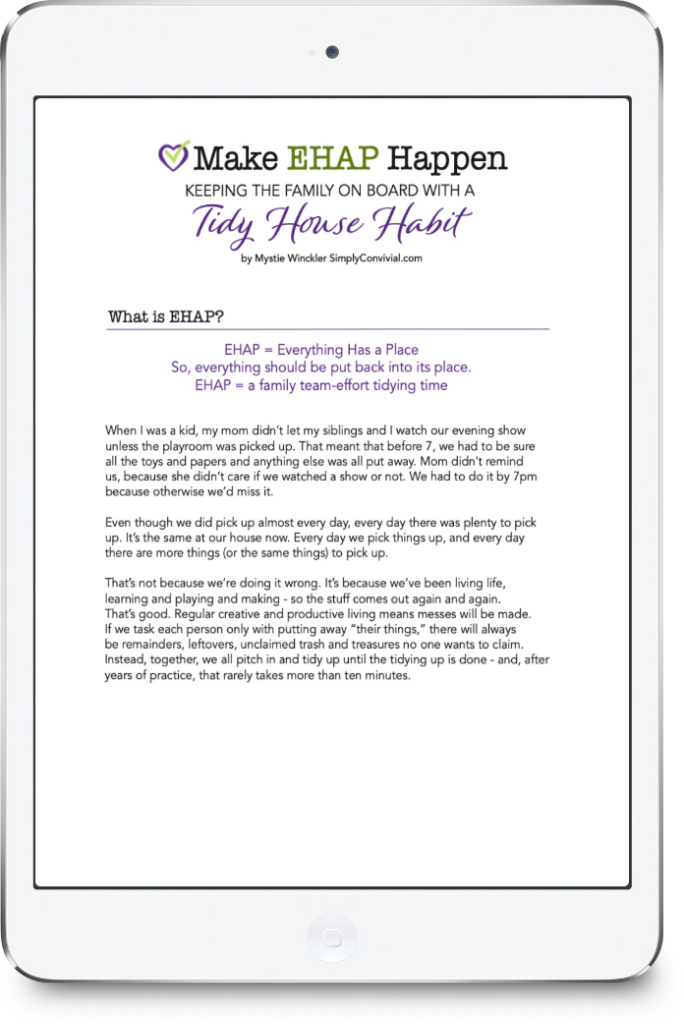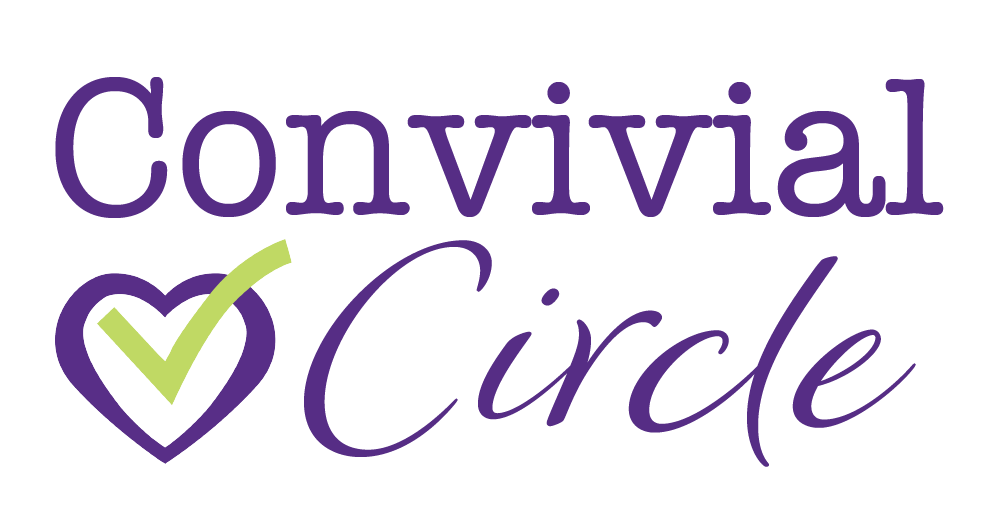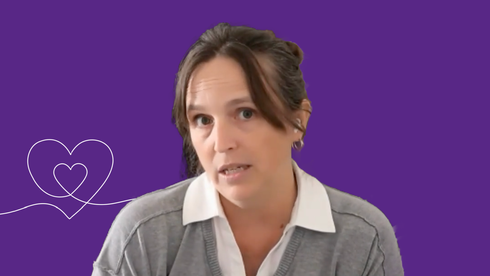
Start the New Year Well
A new year is like a promise of a fresh start, a new beginning, a turning of the page that might mean the turning of a new leaf. What can we do to start the new year well?
I am always trying to turn over new leaves. Too many times I’ve tried turning them overnight, and instead fallen on my face. However, slow, steady change builds up over time and after years of wrestling with those leaves, they are turning and no longer crumbling underneath me.
I’ve learned there are a few support systems that really help any organizational, motivational, or intentional goal stick.
Whether you have new years goals, a word of the year, or just a general sense that you want to grow and do better, these are the pieces that will help you do so intentionally and systematically.
1. Clear your head with a brain dump
As the holidays wind down, the crazy schedules should let up and let us catch our breath. But if we were whirling all month from thing to thing, trying to track presents and events and guests and extra baking and so much more, we feel more like crashing than catching anything.
Even though much is over, there’s now a new year approaching and thoughts of self-improvement and resolutions can hardly be fought off.
Don’t fight off those thoughts, but don’t start with them, either. Before you can set realistic or intentional goals for the upcoming year, you need to start with an empty head.
Write it all down and get all your swirling, swimming thoughts out of your head and onto paper.
When you take some time over the course of a week or so and just start jotting down everything that’s on your mind, you’ll start clearing mental space so you can think about what’s on your mind instead of merely having the bits of information and pressure be tossed around in a jumble.
In fact, I have a free guide that will lead you through the process of a thorough brain dump. I’ll give you assignments and questions that will help you get everything out of your head so you can start the year with intentional plans rather than vague obligations.
To start your brain dump, simply grab a notebook or loose paper, your favorite pen, and a clear table to sit at. Just start listing out anything and everything that pops into your head as you think about what’s on your mind. What do you have to do? What do you want to do? What do you think you should want to do? What needs to fixed around the house? What improvements do you hope to make to your home or to yourself and your routines? What do the kids need? What do you need?
As things come to you, write them down without a filter. Filter them, process them, delete as many as you can later – but let it all flow out of your head, through your hand, onto the paper at this point. Unstop the dam and let it all go.
You’ll be amazed at how simply writing it all out will calm you down and bring you clarity.

2. Create an Interval Plan
The New Year seems like a great time to make resolutions and goals. There’s a whole new calendar just waiting for action.
But one whole calendar is a long space of time. Is it really smart (or SMART) to resolve to do something for 365 straight days or 52 straight weeks? What happens if we miss one day or one week in March? Is the entire year blown?
Of course it isn’t.
One way to avoid setting ourselves up for feeling like a failure is to break up our goal-setting periods into intervals rather than an entire year. When we set a goal and give ourselves a year to complete it, we are tempted to postpone starting because twelve months seems like a long time, then midyear comes and we’ve forgotten we even had a goal, and then we find our resolution list right around November when the holiday busyness sets in and leaves us no time to work on them.
If we instead break up the year and focus on shorter blocks of time, something like one month or six weeks, then we are always in that “the deadline is almost here” press – procrastination is no longer a viable option. Moreover, we are forced to set baby-step goals: Goals that can be achieved within our shorter interval. This helps prevent us from setting grandiose goals. In January it is easy to let the overachiever in us all be the one in charge of vision setting. Anything is possible in a fresh new year, right? Well, how about within the next 6 weeks – starting Monday? This view forces us to examine where we are now and what we can reasonably expect of ourselves right now to get us moving in the right direction.
So rather than setting lots of big goals for the entire year, look at the year-view calendar and break it up into shorter chunks of time.
Yes, right now, print a year-view calendar. Then do this to prepare for a productive year.
Step 1: Mark holidays, birthdays, anniversaries, and vacations. Mark the end and beginning of school years. Mark weddings or anything else you’ve saved the date for this year.
This lets you see the hard lines of your year. These dates show us the important people in our lives and lets us take into account celebrations and memory-making opportunities first.
Step 2: Write a note next to any week that already has a project planned.
If you are in charge of some annual event or a committee, if you always do a certain activity during a certain time of year – put that on the year-view calendar.
Before you start adding new goals and projects, get a hard look at what you’re already committed to.
Step 3: Look at the year and decide what time blocks make sense to you. Draw lines down the side of the calendar weeks you will consider a single interval.
I break up my year into 6-7 week chunks as best I can. This has been a great chunk of time to work on a single habit or accomplish a specific project.
Step 4: Look at the very next interval coming up and make a plan for it.
My series on interval planning will walk you through making a reasonable plan for a short execution burst. Walk through it between each interval and watch your productivity skyrocket.
3. Set up Home Routines
If you’re looking at making new year resolutions of any kind, chances are that you have some changes you’d like to make to your house keeping routines.
It seems like it should be possible to keep a decent and orderly home, doesn’t it? Is that wish simply impossible, especially if you have young children?
Yes and no.
Think about what you mean by “clean house” when you use that phrase to yourself. Picture what you want. Look around at your current reality; yes, even your post-Christmas reality. If you tell yourself “clean house” and that conjures up pictures of completely empty counters, decorated bookshelves, never smudged windows, and floors that never even need to be mopped, then you are setting yourself up for frustration and failure.
If “clean house” means “functioning house,” however, then we’re onto a useful definition.
Our homes are tools to be used for the real goal of loving our families and serving the people God brings through our doors and the people we meet when we go out the doors. The goal is not to have a home that is clean for its own sake. A home that is clean but is serving no one is a barren waste.
Where there are no oxen, the manger is clean, but abundant crops come by the strength of the ox.
Proverbs 14:4
But a dirty, chaotic home is not a useful tool, either. If we can never find what we need, if our bathrooms can’t welcome a visitor, if no one has clean clothes to wear out of the house, then we aren’t stewarding our resources to anywhere near their potential. An orderly home and a prepared manager are of great service to the family and the world at large.
And it all begins with basic routines.
You need three basic routines to keep the ship upright and running:
Routine #1: Laundry
Whether you do a little laundry every day or dedicate an entire morning to getting it all done in one fell swoop, you need a laundry strategy. Everyone in the house needs clean clothes, the kitchen needs clean towels, and bathrooms require clean towels. Much of the order and work of the home depends upon clean laundry. Find a laundry routine that works for you.
Routine #2: Kitchen
Everyone needs to eat, and the kitchen is where that work is done. That means it generates a lot of mess! Not only do you need a meal strategy, but you also need a kitchen cleaning plan. A good place to begin is with washing all the dishes and wiping down the counters every evening.
Routine #3: EHAP
EHAP stands for Everything Has A Place. The implication is that everything should be in its place.
It’s our family code word for tidying up, and usually refers to our daily afternoon pick-up time. This one routine has helped the general state of our house so much, that I now consider it an essential. If nothing else happens, I try to make sure we get in an EHAP to keep the chaos at bay.
Of course there’s much more work to be done to keep a reasonably clean house, but if you start with these three, maintain these three, you’ll be in good shape and better able to add in the others. These three are the best ones to begin with and to ensure you have learned well.

Want a Tidier House?
- Get clear where and when your family needs to tidy up.
- Bring the kids on board to take responsibility for tidying more than their own stuff.
- Learn the three steps to make the habit stick for the long haul.
4. Focus on Keystone Habits
Rather than grandiose goals for a new year, we should be focusing on small habits that we can build upon. These new year habits continue giving, because they become automatic. So we can gain their benefit without expending much energy to do so.
A habit is an acquired behavior pattern regularly followed until it has become almost involuntary.
Almost involuntary. Automatic. We should work to make several key behaviors automatic rather than requiring will and decision. To just get out of bed without thinking about it instead of debating and arguing internally. To always keep water nearby to sip. To get things onto our lists and calendars right away instead of “later,” which never comes.
Whether habits are planned and created conscientiously, or allowed to be haphazardly filled in by chance, they are habits all the same. Habit rules ninety-nine percent of everything we do.
Charlotte Mason
A habit is a practice.
And practice makes perfect. Practice means you’re working toward becoming good at this thing. It means you don’t expect yourself to get it right the first time or every time. Deliberate practice is work, but it bestows excellence after consistent, persistent application.
But a habit is formed by exercising the will; it calls for a decision, repeated over and over again, and begins one step at a time.
And deliberate practice grows our own capacity, as well.
That which we persist in doing becomes easier — not that the nature of the task has changed, but our ability to do it has increased.
Ralph Waldo Emerson
Creating a habit requires effort, but in the end it will save you much more effort than it took to form.
Everything is difficult before it is easy.
Goethe
It takes time and attention and effort to wear a groove down into the path you want to follow. The longer you wear that same groove down, the easier it is to stay in it and not wander off.
Some habits are better foundations than others. These are keystone habits. They are small actions that make it easier to make other good choices. Keystone habits, according to Charles Duhigg in Power of Habit, are habits that give “small wins [that] fuel transformative changes by leveraging tiny advantages into patterns that convince people that bigger achievements are within reach.”
We can all use some more small wins to help us move forward, don’t you think?
Keystone habits that have been identified by researchers are
• exercise
• eating dinner as a family
• making your bed
• food journaling
Building these habits might have the side effects of improving your patience, productivity, and even your spending.
My top tip for building a new habit
Tie your habit to something secure.
Attach your new habits to a trigger. You already have habits. Hook your new habits to current habits to help you remember them and to help them become your default more readily and smoothly. Don’t try to completely remake your life from scratch. Rather, add few small changes to your current routine.
Drink a glass of water before each meal (the meal is the trigger to drink water).
Sort your mail as soon as you bring it in (getting the mail is the trigger to dealing with it).
Take your vitamins when you give your children theirs (getting out the vitamins triggers your own vitamin reminder).
Check your calendar and to do list while you eat breakfast (eating breakfast is the trigger to look over your day).
Whatever new habit you want to establish, pin it to something that already happens routinely every day.
5. Manage Your Tasks
Why do you need a task management system?
As moms with kids and home and projects to manage, we have a lot to do and a lot to keep track of. It’s no wonder we often feel overwhelmed and scattered. We need some way to know what we have on our plates and what we need to be doing today. That is what a task management system is for: to help us manage tasks.
Keeping a list of what you need to do for at least the next two weeks, if not longer, will dramatically improve your state of mind and ability to cope when life throws you a curve ball.
A useful task management system that is effective and helpful rather than just another thing to do is one that is set up in a way that supports your lifestyle. You shouldn’t have to try to fit your life into business and corporate categories in order to take advantage of time management and productivity advice. We can draw on the same principles, but live them out in a way that fits us and our callings, our roles, and our responsibilities. We are multifaceted individuals, wearing many hats, and we need a robust way to keep track of all of that outside of our heads.
Too often we try to remember all the plates we’re trying to spin just in our heads. This causes a lot more stress than we realize. Our minds are not the best reminder system. Our minds are much better used for thinking, processing, deciding, creating – but when we use our minds as a reminder container, then there’s not enough space there for creative thinking – sometimes not even enough left for simply being present in the here and now.
A task management system, kept on paper or digitally, is a much better place to keep reminders. I think digital is even better, because when the tasks are digital, they not only take up less space in our minds, they take up less space in our homes.
Need some help with these 5 pieces to running an organized home?
- Get gospel-focused advice and encouragement.
- Level up your plans and progress, one step at a time.
- Find accountability with likeminded women without any social media drama.
- Experience the homemaking mentoring you’ve always wanted.
- Learn to love being a homemaker!




